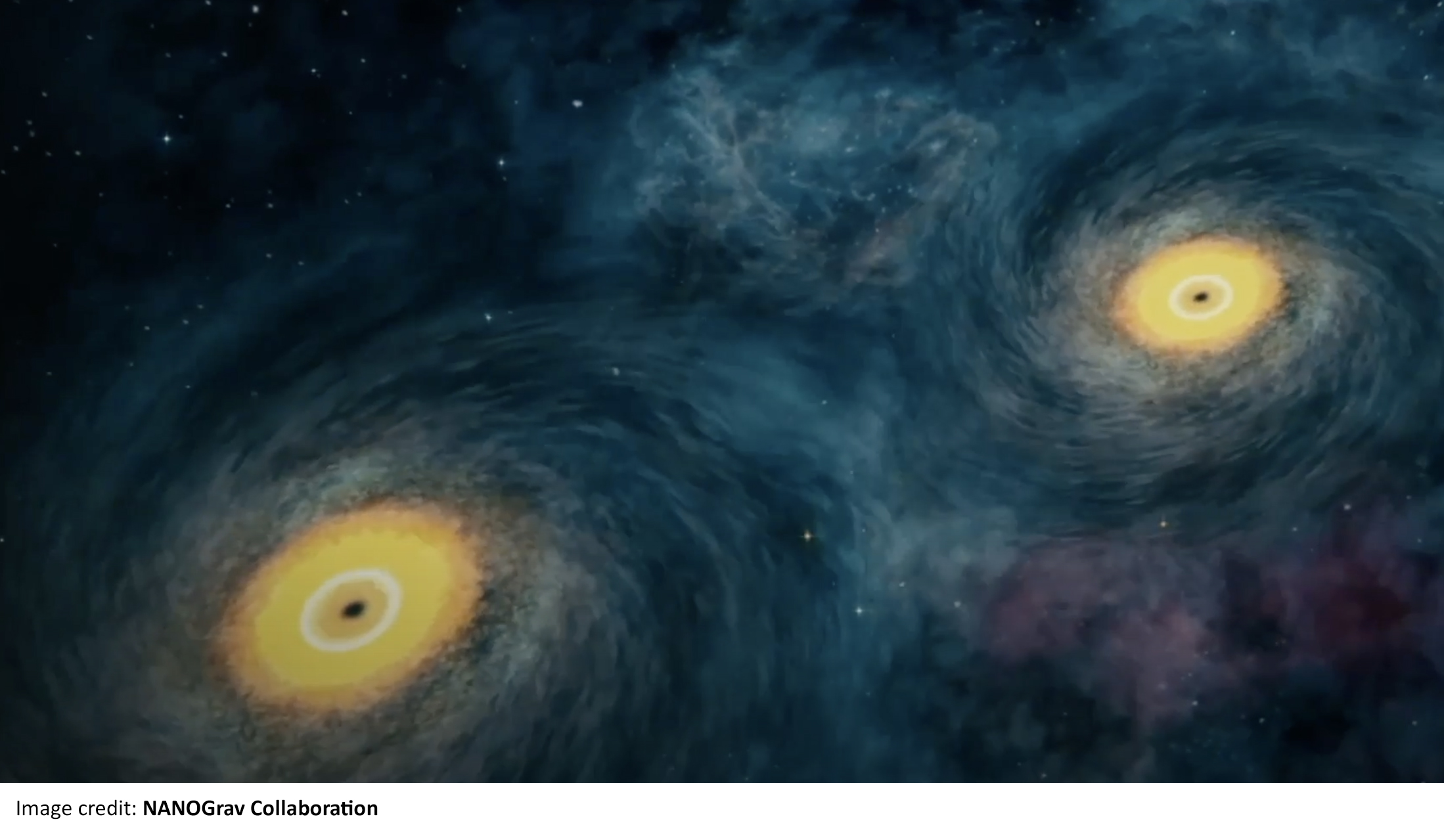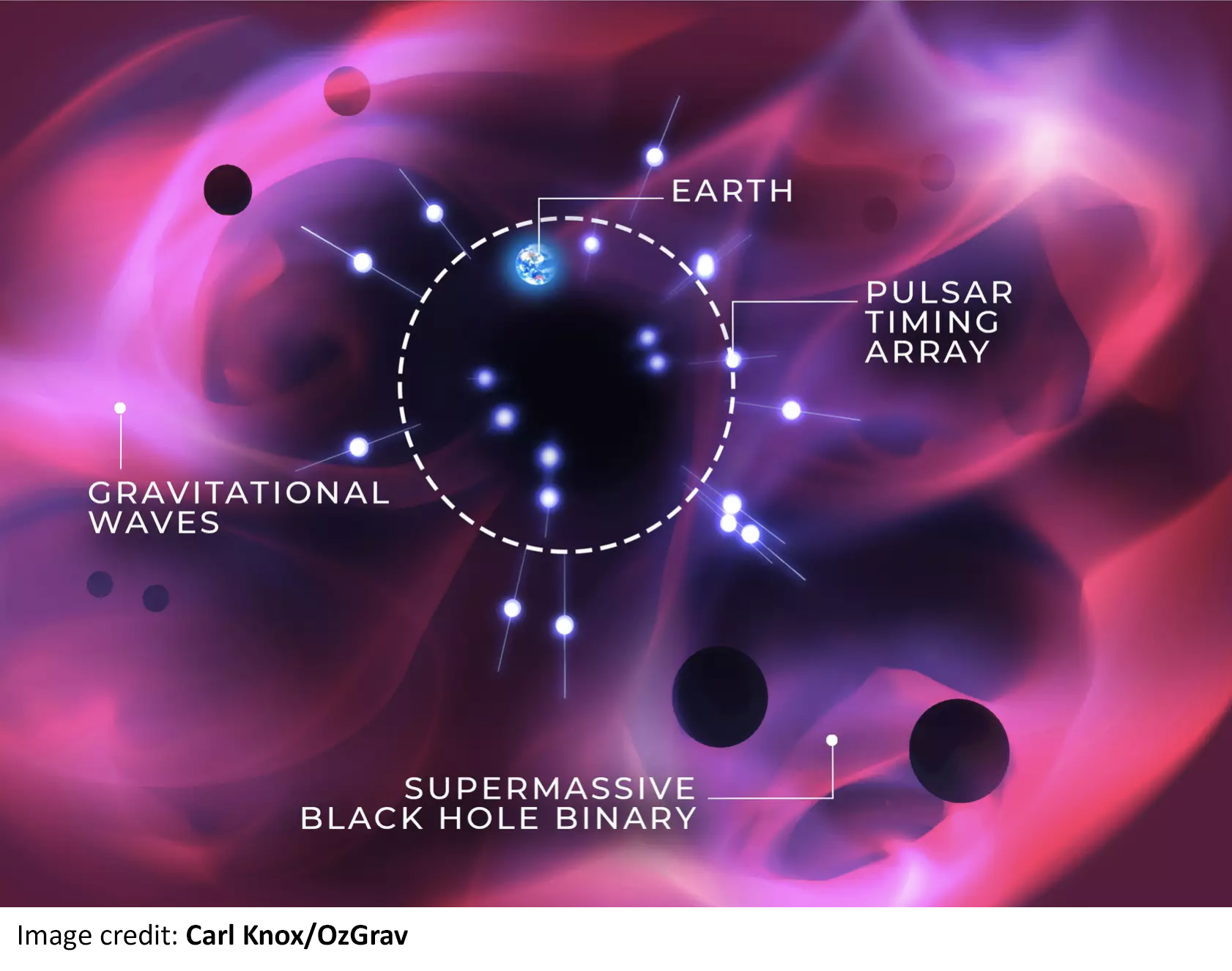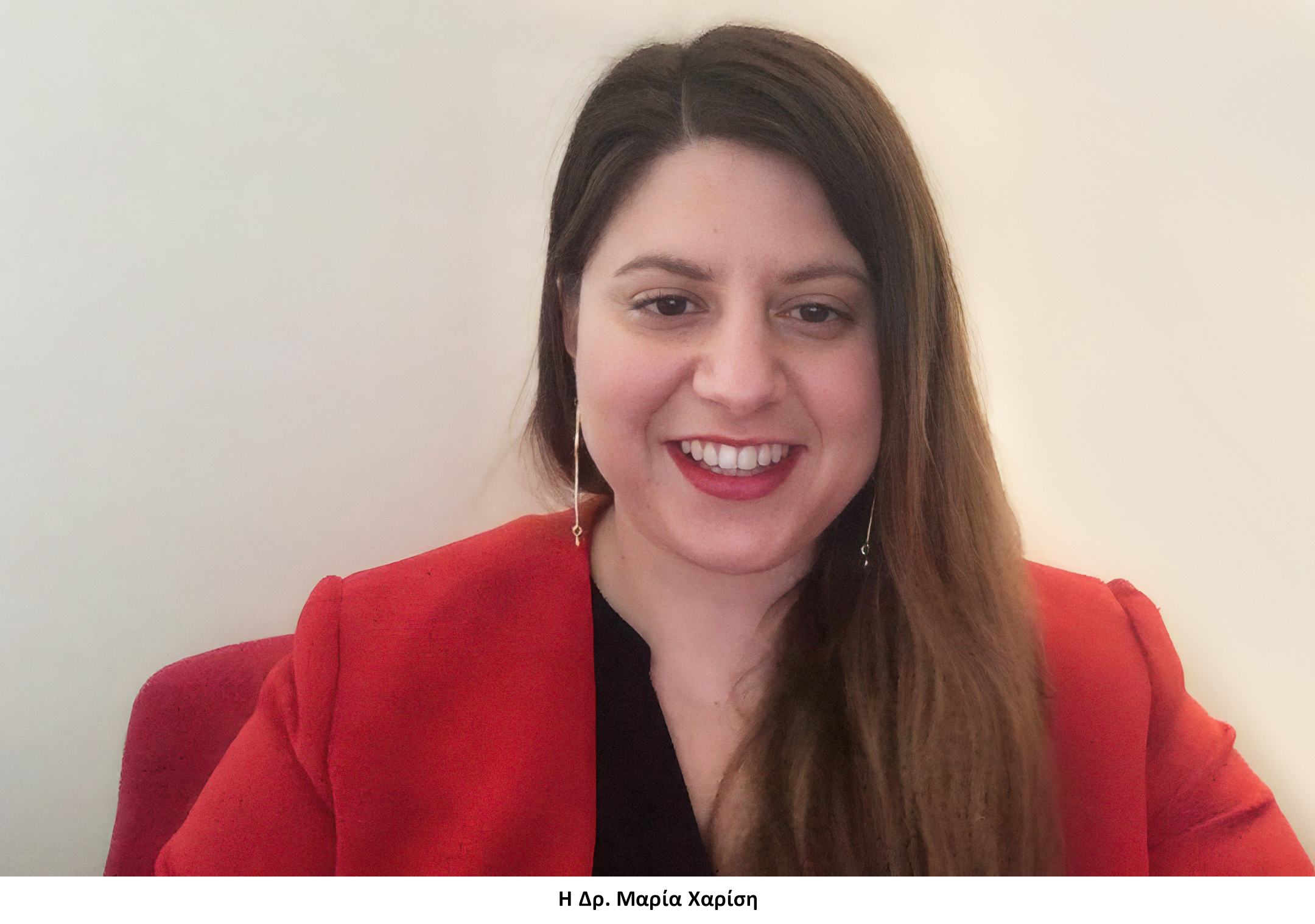All Science News

ERC Starting Grant awarded to a postdoctoral researcher at the Institute of Astrophysics of FORTH for her research on supermassive black holes
Maria Charisi, a postdoctoral researcher at Vanderbilt University, and soon an assistant professor of physics at Washington State University, is awarded a highly competitive and prestigious Starting Grant from the European Research Council. ERC Starting Grants are awarded to talented early-career scientists who have already produced excellent work and show potential to be research leaders in order launch their own projects. Maria Charisi will receive 1.7M Euro in funding for five years, to lead a group at the Institute of Astrophysics of the Foundation for Research and Technology-Hellas (FORTH), with the aim to detect and identify for the first time the exact location of a supermassive black hole binary which emits gravitational waves.


Supermassive black hole binaries should form frequently when galaxies collide, since every massive galaxy has a supermassive black hole with a million to a few billion times the mass of the sun. Yet they have remained undetected despite decades-long efforts. These systems are crucial for understanding how galaxies and their supermassive black holes form and evolve. At the last stages of their evolution, supermassive black hole binaries emit bright electromagnetic radiation and can be identified as quasars (a type of a bright galaxy) the brightness of which changes periodically. They also emit low-frequency gravitational waves which can be detected with a galactic scale detector consisting of pulsars (nature’s most precise clocks) called a pulsar timing array. When gravitational waves pass through the region of the pulsars they “stretch” the spacetime, changing the distance between the pulsars and the Earth, modifying the arrival time of the pulses. This change in the time of the pulses makes it possible to locate the general area in the sky from where the gravitational waves originate. As a result, these binary systems are excellent targets for multi-messenger observations (combining light and gravitational waves).

The ERC project of Dr. Charisi will combine these measurements with observations of quasar variability in the same general area and aims to bring the first detection of supermassive black hole binaries within close reach. The team will develop new machine-learning search techniques and apply them in state-of-the-art data from telescopes detecting electromagnetic radiation, including the upcoming Vera Rubin in Chile, as well as, in gravitational-wave data of continuously improving sensitivity from pulsar timing arrays.
It is worth mentioning that FORTH hosts the largest number of ERC Grants (40) in Greece. Specifically, the Institute of Astrophysics of FORTH, despite its small size, having just 5 researchers and 4 affiliated faculty members from the University of Crete as core personnel, hosts 4 of the 5 ERCs in the field of Universe Sciences that have been awarded to Greece. This is yet another indication of the international recognition of the quality of science that is being performed at FORTH.
The ERC announcement: https://erc.europa.eu/news-events/news/erc-2023-starting-grants-results

Short Bio
Maria Charisi got her undergraduate degree in Physics from the Aristotle University of Thessaloniki. She continued her graduate studies in astronomy at Columbia University in New York. She got her PhD in 2017, leading one of the first electromagnetic searches for supermassive black hole binaries. Then she got a fellowship from the NANOGrav (North American Nanohertz Observatory for Gravitational Waves) collaboration at Caltech in Los Angeles, where she expanded her expertise to gravitational-wave searches of supermassive black hole binaries. She is currently a VIDA (Vanderbilt Initiative for Data-Intensive Astrophysics) post-doctoral fellow at Vanderbilt University in Nashville, TN, where she has pioneered the combination of electromagnetic and gravitational wave observations. She is an active member of the NANOGrav collaboration, the International Pulsar Timing Array and the LISA consortium. She will continue her research in the emerging field of multi-messenger astrophysics at the Institute of Astrophysics of FORTH.








